In September 1914, First Lord of the Admiralty Winston Churchill directed RNAS squadrons based in Dunkirk, France, to plan attacks on German Zeppelin sheds in Germany. Churchill was concerned about potential airship attacks on London, and believed that the best defense was to carry the attack to the source. Squadrons 1 and 2, consisting of two aircraft each including three Sopwiths and a B.E.2b, were forward based near Antwerp, Belgium, approximately 100 miles by flight from Zeppelin sheds in Cologne and Dusseldorf.
On September 22, 1914, these four aircraft took off to bomb these sheds, in two 2-plane flights. All but one of the aircraft failed to locate their targets due to heavy low cloud cover, and returned to base without attacking. Lt. Charles Collet, in an 80 hp Sopwith, emerged from the cloud cover at an altitude of 400 feet, a short distance from the Golzheim shed near Dusseldorf, but his three bombs missed, two of them failing to detonate.
A second raid took place on October 8, 1914, as Belgium was being overrun by the German Army. Lt.Cdr. Spencer Grey in Sopwith Tabloid No. 167, took off to bomb the shed at Cologne, but was unable to locate the shed and dropped his two 20 lb bombs on the main train station. He returned to Antwerp about 5 hours after taking off.
At the same time, Lt. Reginald Marix in Sopwith Tabloid No. 168, flew to Dusseldorf and located the Zeppelin shed at Lohausen. He closed in to drop his load of two 20 lb. Hale bombs, while weathering a hail of ground fire. His first bomb fell short of the shed, but the second struck the shed and Zeppelin Z.IX within, setting off secondary explosions and fire which completely destroyed the Zeppelin.
Tabloid 168 had been shot up a bit, and Marix had no rudder control, and had to turn by banking through use of his wing warping system. He nursed his Tabloid to within 20 miles of Antwerp before putting down in a field. He counted 30 bullet holes in the machine. Marix then traveled by rail locomotive, bicycle and auto back to his airfield which was just being abandoned to the advancing Germans. He and Grey drove from Antwerp to Ostend to catch the last ship out to London. Marix was awarded the DSO for his actions in destroying Zeppelin Z.IX.
Although Marix intended to return with a mechanic to recover No. 168 the following morning, the advancing German troops made this impossible, and this aircraft was never seen again.
The Sopwith Tabloid was derived from a floatplane version known as the Sopwith Schneider, which won the Monaco air races in 1914. Approximately 30 Tabloids of various versions were built, with the majority going to the RFC and the RNAS. It was an advanced design for its time.
Here is the reproduction of Tabloid No. 168 at the RAF Museum at Hendon:

Here is my representation of Tabloid No. 168 in 1/32:
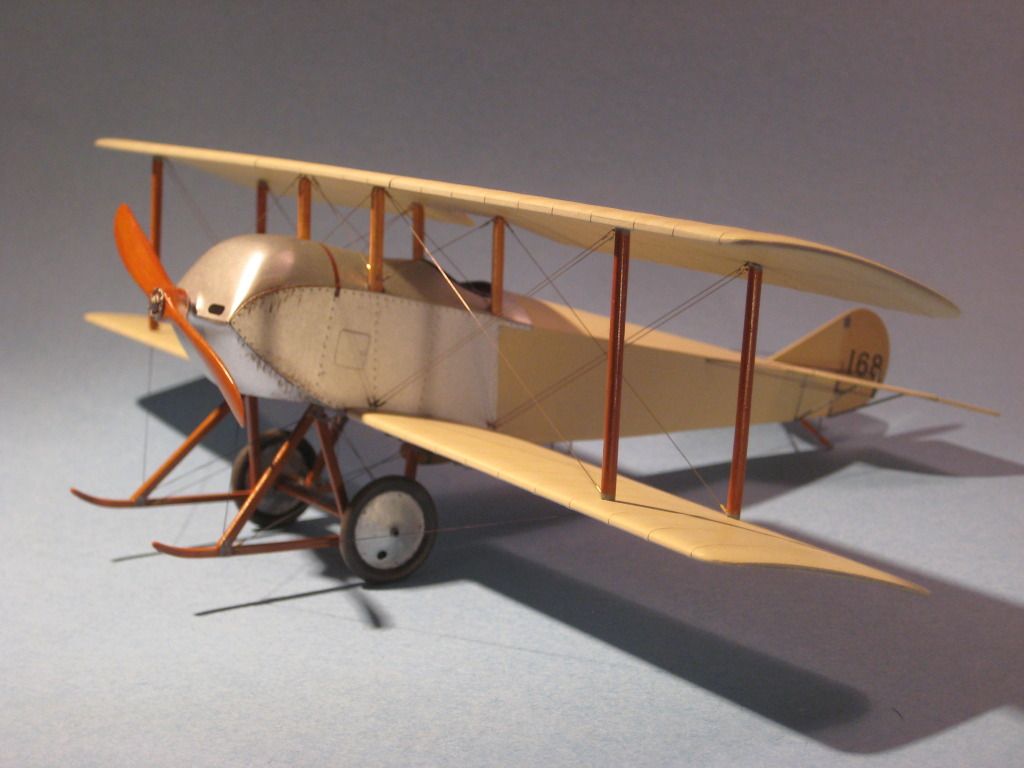
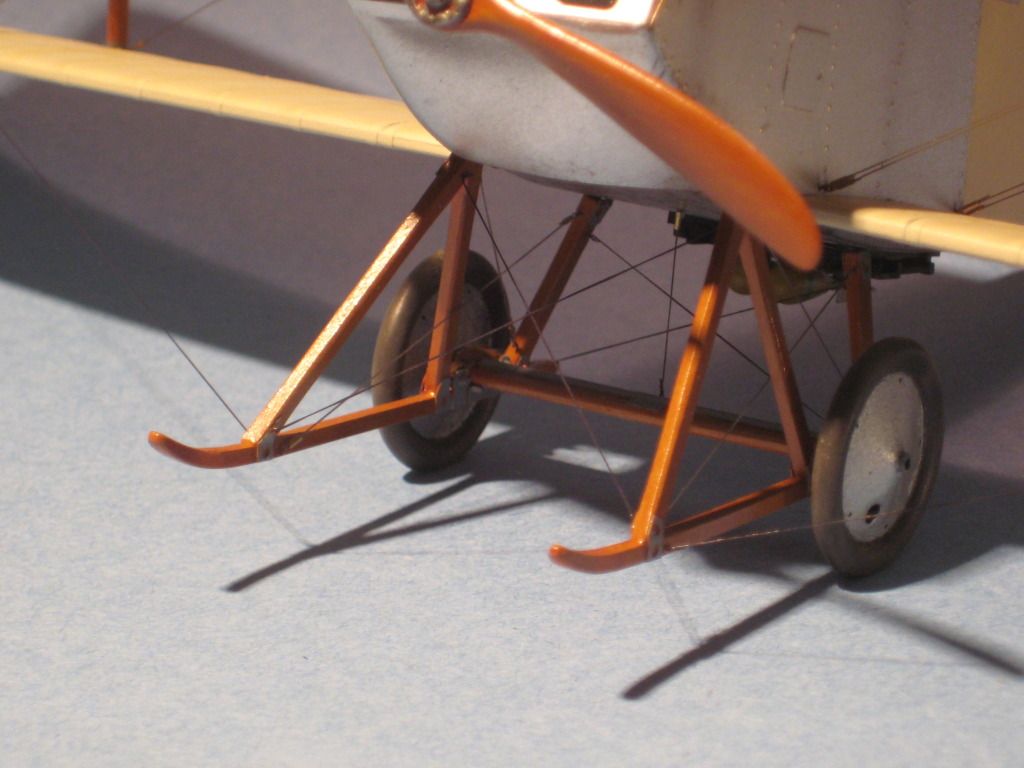

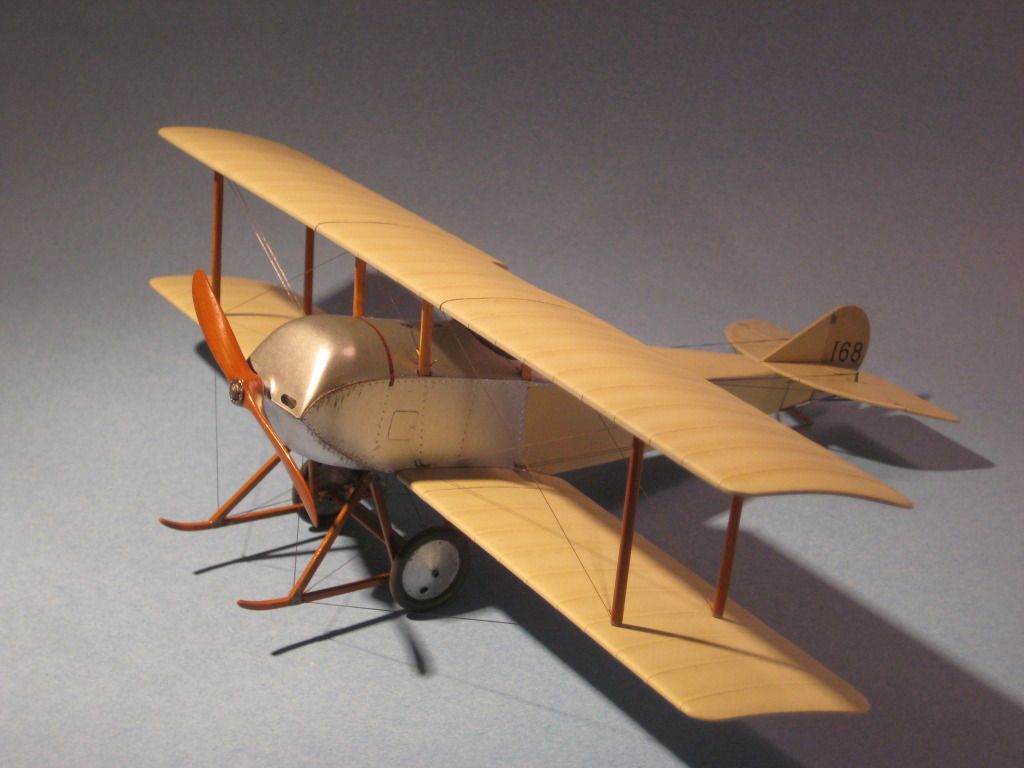
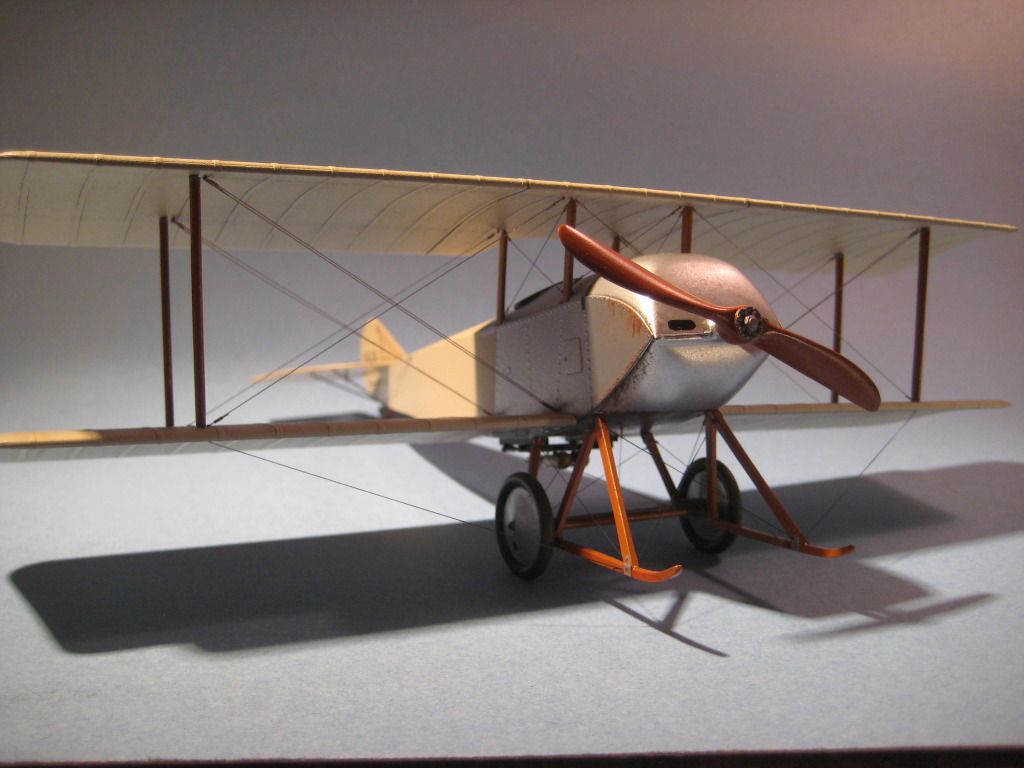



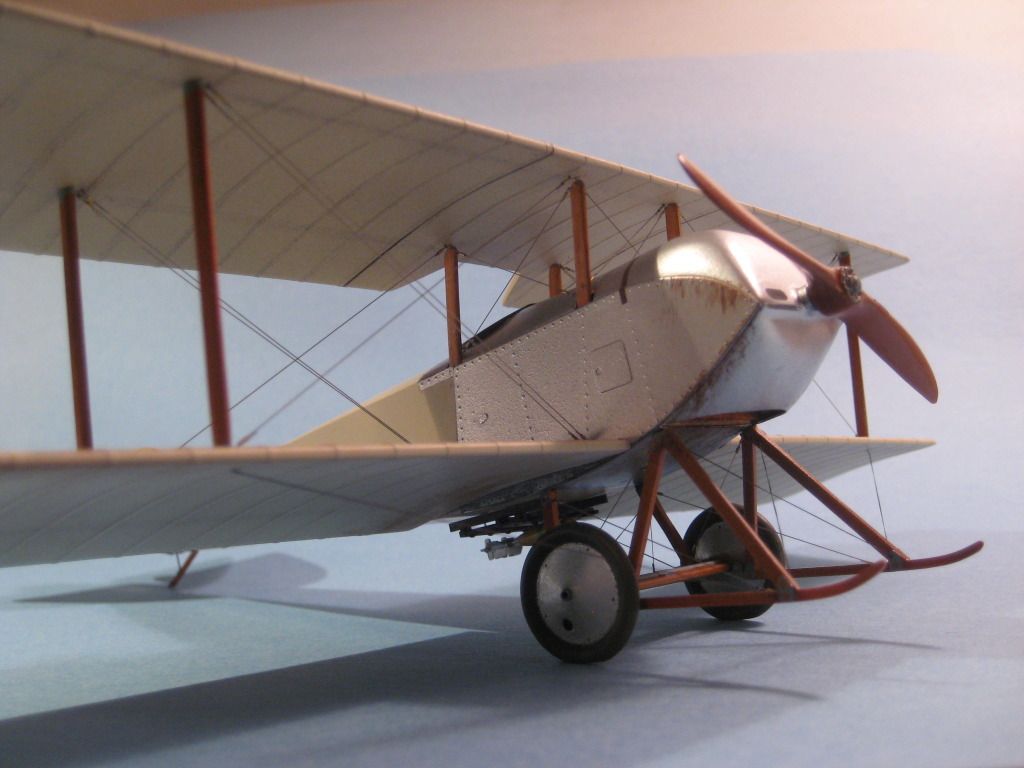
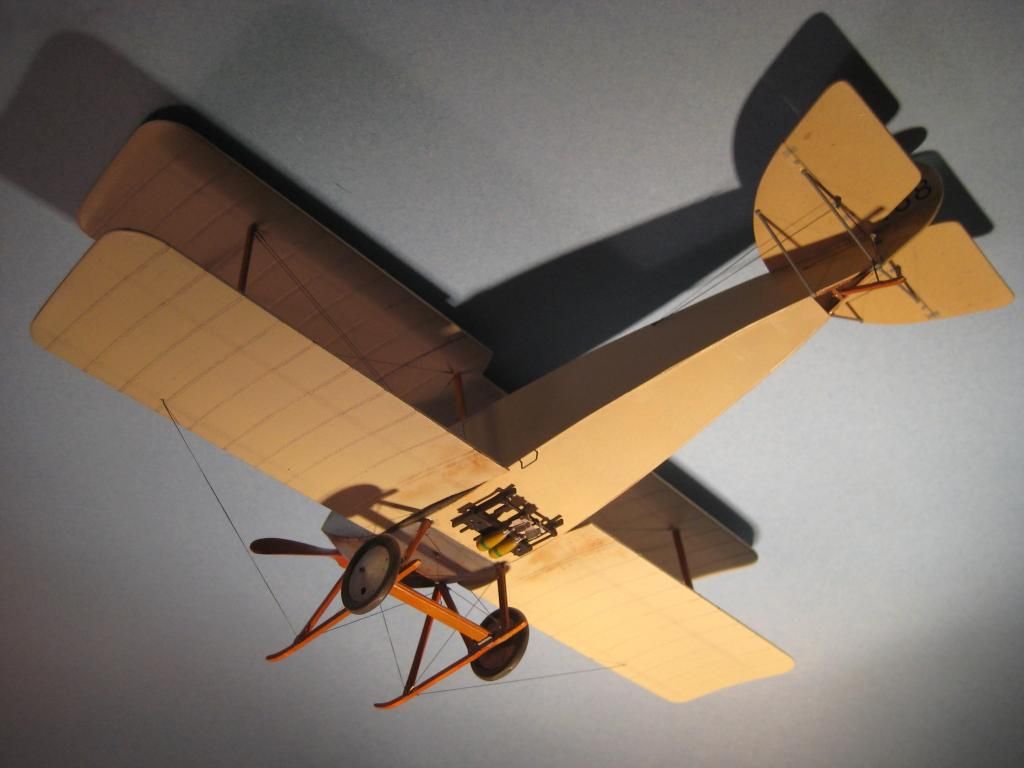

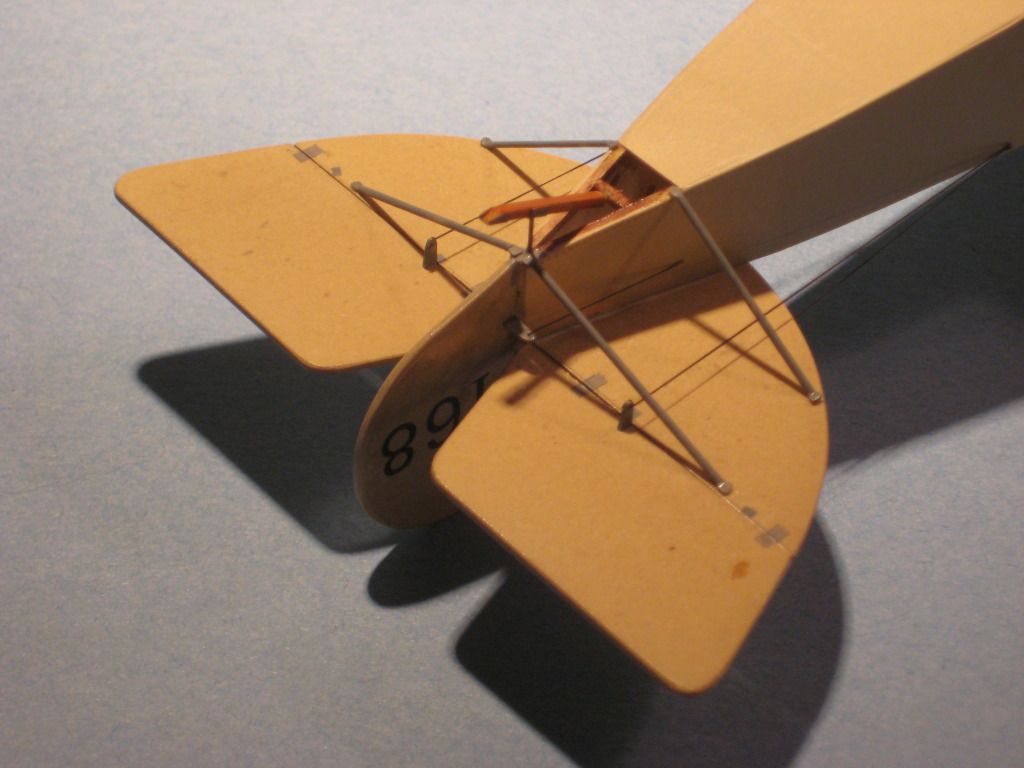
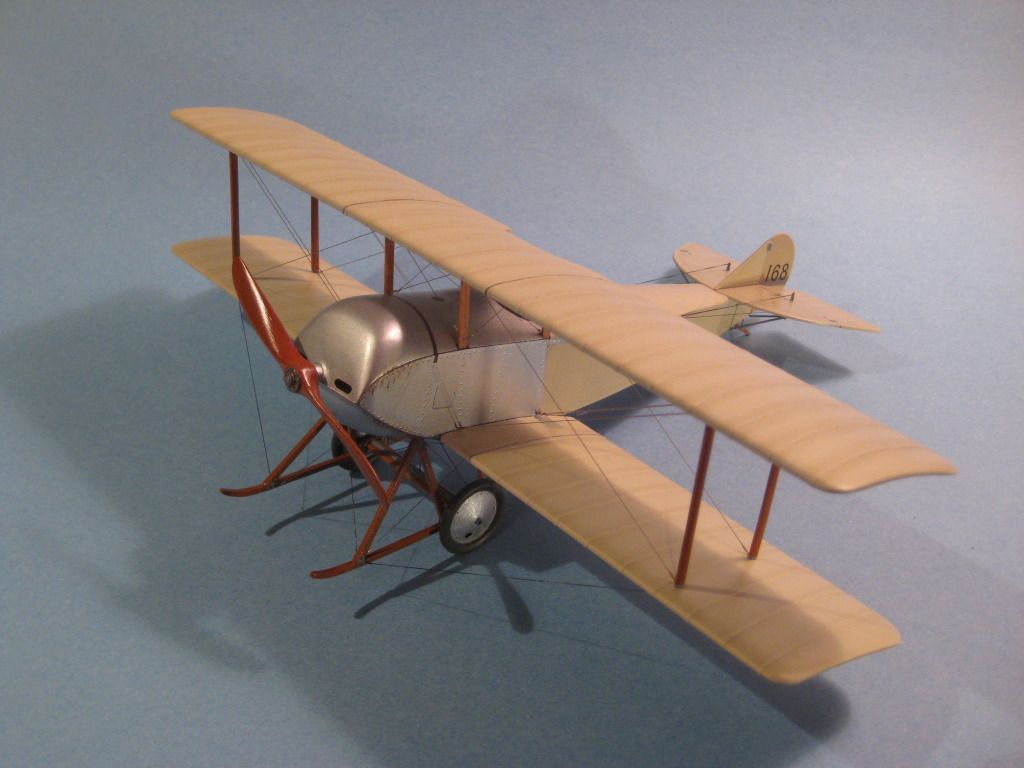
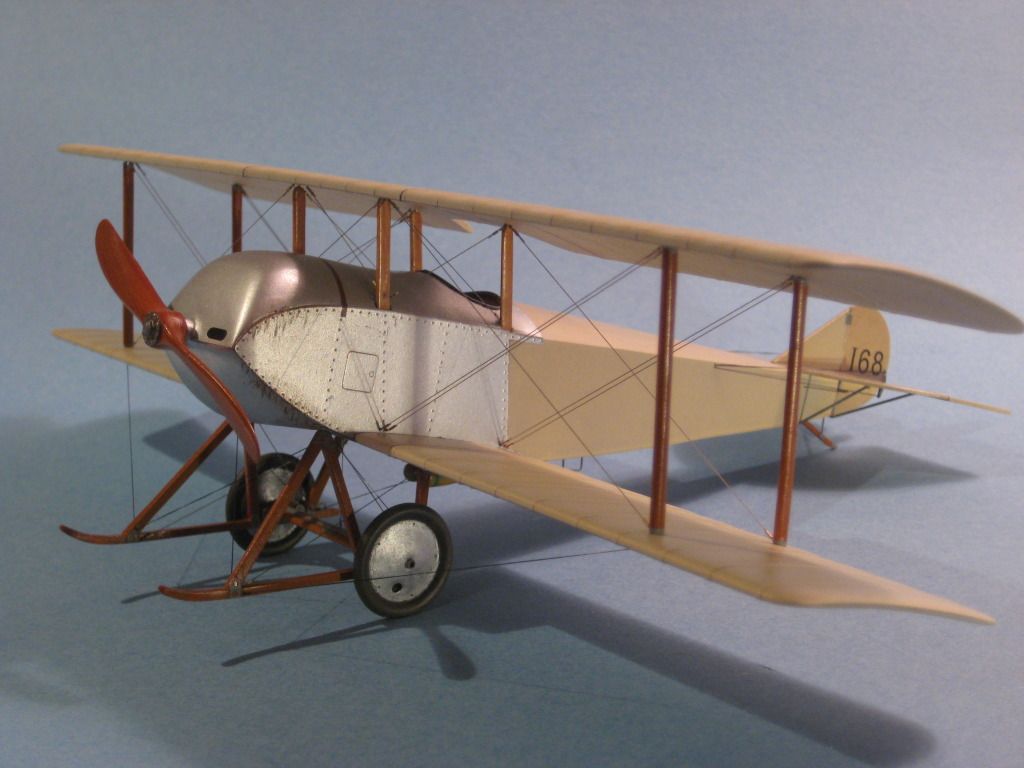
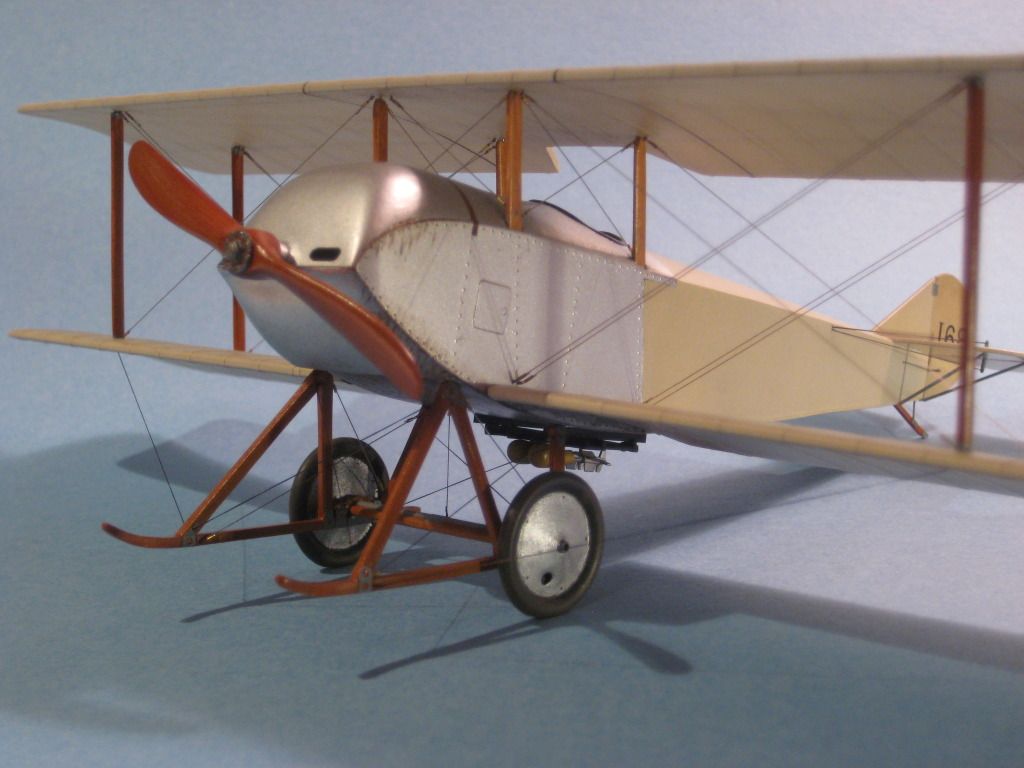
This was an enjoyable but somewhat lengthy project, and I learned some new things. I am pleased with this interesting model.

I have a few WNW and other kits up next, starting with Goering's white Fokker D.VIIF for the Group Build, but for you scratch build fans, I expect to do an AGO C.I German pusher and an IRAS Sikorsky S-16 within the next two years or so, interspersed with a variety of kit builds. Fun!!! Thanks my friends for your unstinting support and assistance. I appreciate it.
Regards,
Bob